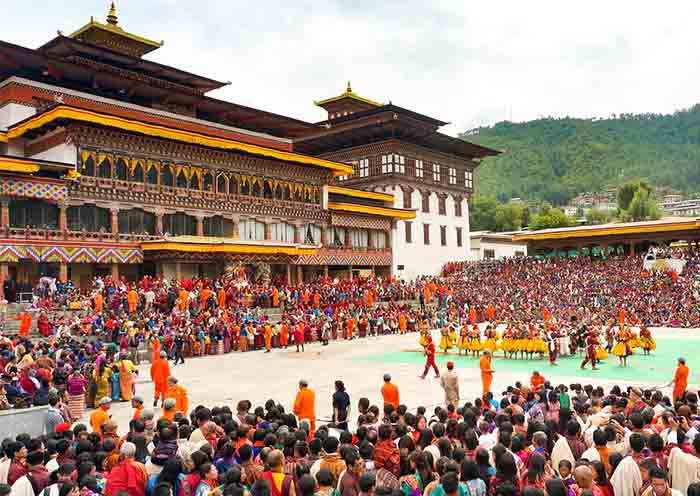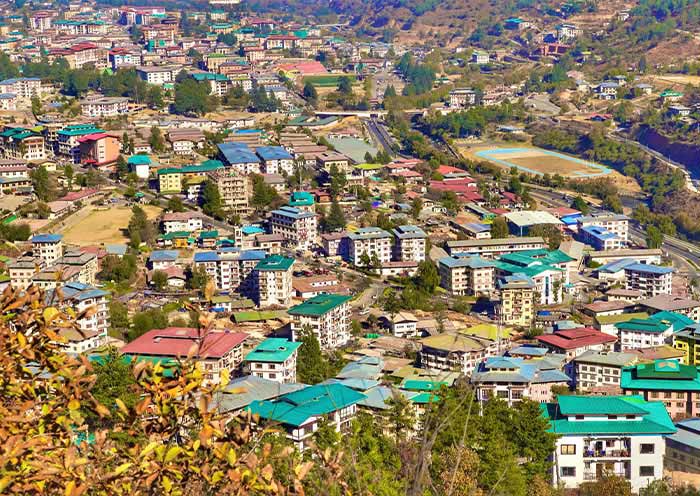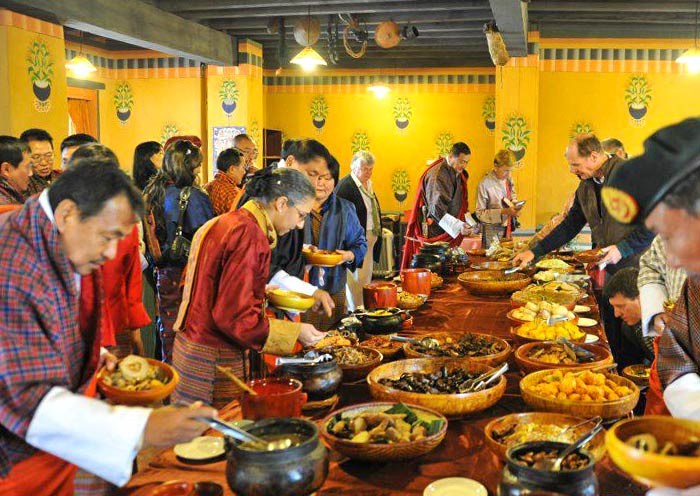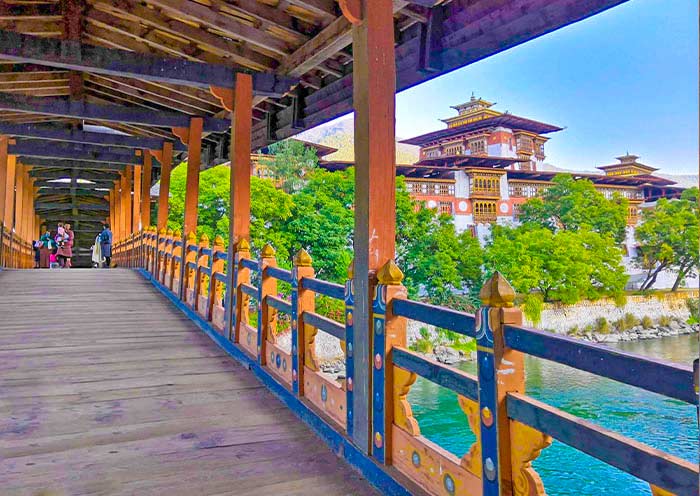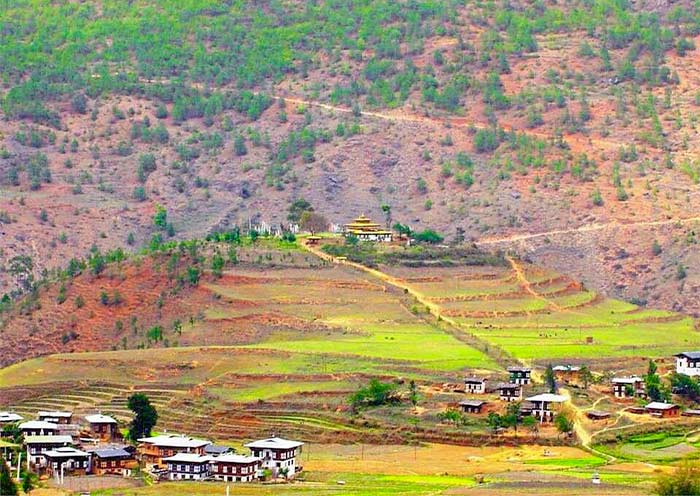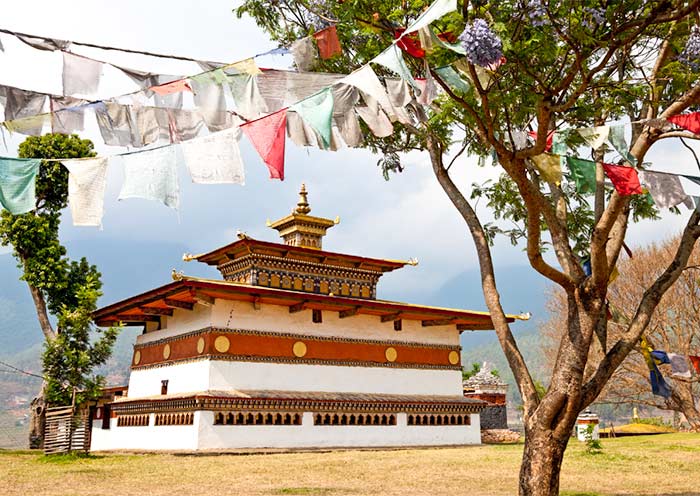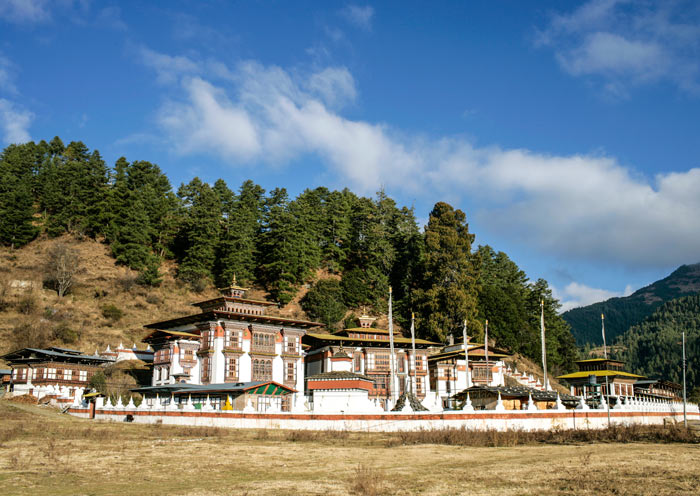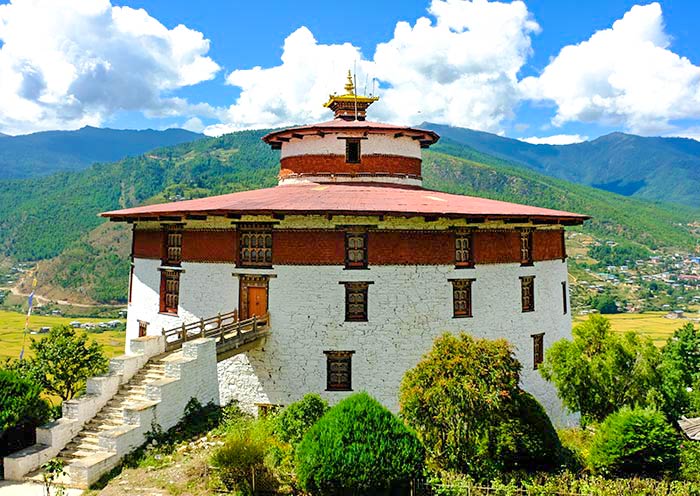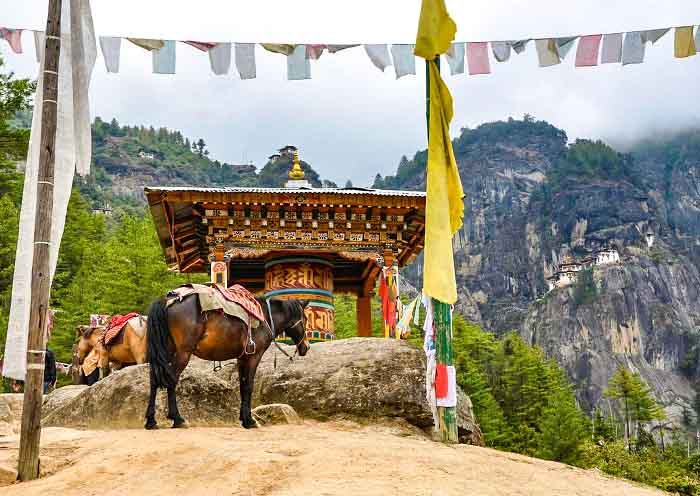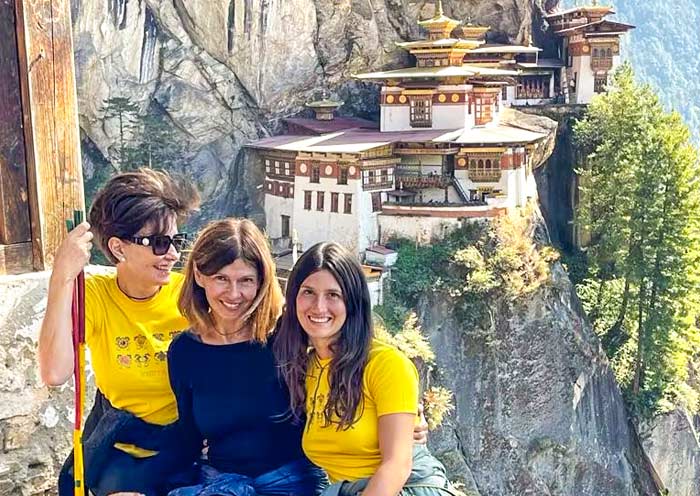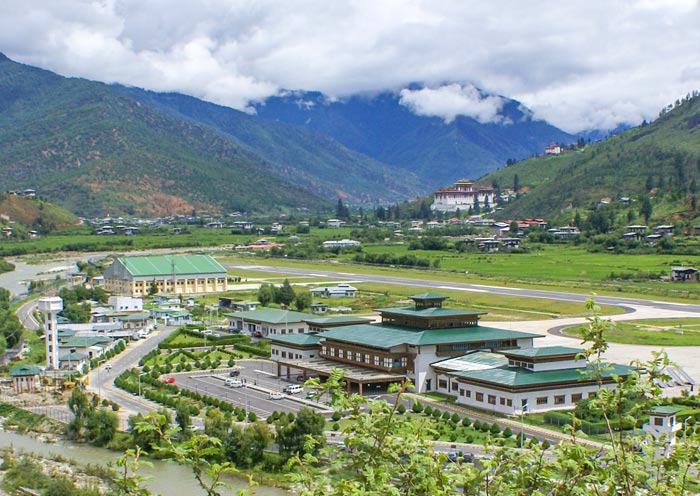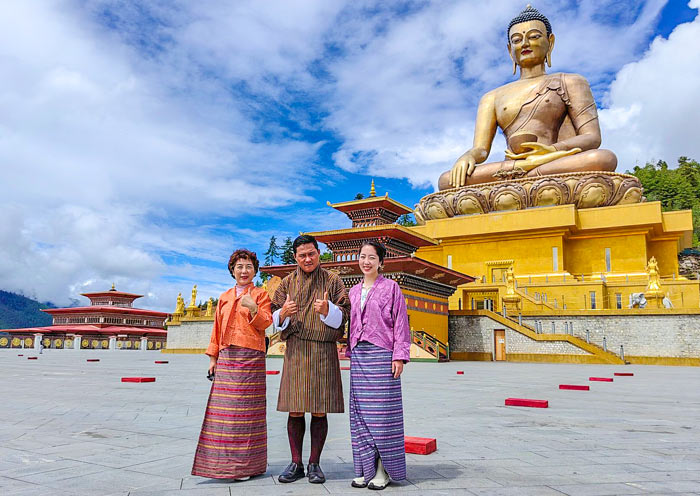Welcome to Bhutan, the Last Shangri La in Pristine Himalayan Kingdom. Take a deep breath and enjoy the refreshing breeze in the happy country where 71% of the land is covered with forests. Your guide and driver in Paro will greet you at Paro International Airport, Bhutan's only international airport.
Then, you will head to Thimphu, the capital city of Bhutan, which is approximately 50km away and takes about 1.5 hours to reach. Unlike many capital cities dominated by skyscrapers and heavy traffic, Thimphu doesn't have traffic lights or a railway system. Surrounded by rolling mountains, Thimphu is known for its picturesque scenery, Bhutanese dzong, Buddhist monuments, and traditional arts and crafts. Thimphu is committed to preserving its cultural heritage and natural environment while slowly embracing modernity. (Note: The coverage of attractions on the first day depends on your flight arrival time. If you arrive in the morning, you should be able to visit all of the sites listed below. If it is in the afternoon, we might adjusted one or two to the next day.)
Once in Thimphu (2,340m), you can enjoy your exploration in Thimphu, including visiting the Buddha Dordenma Statue (Bhutan Point), the National Memorial Chorten, and Tashichho Dzong.
You will visit the iconic landmark of Thimphu city - the Buddha Point first. It is the largest sitting Shakyamuni statue in the world that completed in 2015. The statue embodies an ancient prophecy of radiating happiness and peace throughout the world. In addition to admiring its impressive height of 51.5 meters, constructed of bronze and gilded in gold, you will also be able to see 125,000 smaller Buddha statues placed within it. Moreover, from this vantage point, you can enjoy a magnificent view of the Thimphu Valley.
The National Memorial Chorten is the most visited landmark in Thimphu. Constructed in 1974 in memory of the Third King, His Majesty Jigme Dorji Wangchuk (known as the Father of Modern Bhutan), by his mother, it reflects the late king's vision of promoting world peace and prosperity. The Chorten follows a Tibetan-style architecture and is adorned with remarkable paintings and intricate sculptures. You can observe the traditional stupa design, featuring a pyramidal pillar topped with a crescent moon and sun.
Then, you should not miss the visit to Tashichho Dzong (Thimphu Dzong), which has served as the seat of the government since 1952. This magnificent fortress-like structure is located on the western bank of the Wang Chu River. It seamlessly integrates with the entire valley and stands as the ultimate center of power in Bhutan. It houses the offices of the current reigning monarch, the Fifth King (Jigme Khesar Namgyel Wangchuck), as well as the ministries of internal affairs and finance. Additionally, it serves as the residence of the spiritual leader of Bhutan, the Je Khenpo, and hosts the central religious institutions of the country. During the summer season, the Je Khenpo resides in the Thimphu Dzong, while in the winter season, they relocate to Punakha Dzong. Walking around the Dzong, you will discover that it is an impressively large structure surrounded by well-kept lawns and beautiful gardens. Tashichho Dzong has two main entrances. One entrance leads to the administrative section in the south, while the other, situated in the north, grants access to the monastic quarter where the Thimphu Tshechu Festival and masked dances are performed. Note: The tourist opening hours of Thimphu Dzong are from 5 PM to 6:30PM on weekdays and from 10 AM to 4 PM on weekends. It is required to have a tour guide accompany you for a visit to the Dzongs. Before entering for a visit, security checks are conducted.
For dinner, you can enjoy a dinner with a Bhutan Culture Dance Show (optional). Afterward, you can check in at your cozy hotel in Thimphu, where you can rest and adjust to any time difference.
Arrival Ideas:
Bhutan is situated between Tibet in China to the north and India to the south. To reach Bhutan, you can either travel by air to Paro International Airport, the country's only international airport, or by land through the entry points of Phuentsholing or Gelephu from India. Bhutan's national carrier, Druk Air, Bhutan Airlines, and other international airlines operate regular flights to Paro from major cities like Delhi (India), Kolkata (India), Bagdogra (India), Gaya (India), Guwahati (India), Dhaka (Bangladesh), Bangkok (Thailand), Kathmandu (Nepal), and Changi (Singapore). There are also some charter flights to Paro from Hong Kong (China) and Kuala Lumpur (Malaysia) on a seasonal basis. Approximately 30,000 people arrive at Paro Airport every year.
Kind Reminds:
1. You can contact us to book your flight to Paro and land directly in Bhutan.
2. Visitors of all nationalities, except those from India (require a permit), require an E-visa (40USD/pax) before entering Bhutan. All nationalities are welcome to visit Bhutan, and there are no specific restrictions on granting visas to enter the country.
3. Visitors from India are able to apply for a permit but are required to hold an Indian passport or an Indian voter ID card.
4. Visitors from Bangladesh and the Maldives also require a visa, which can be applied for and approved in advance of travel or upon arrival in Bhutan.










